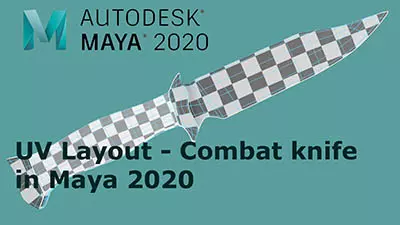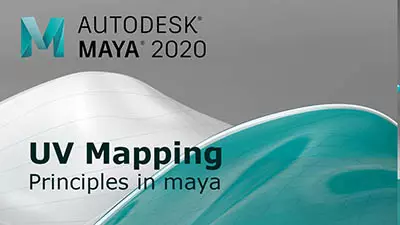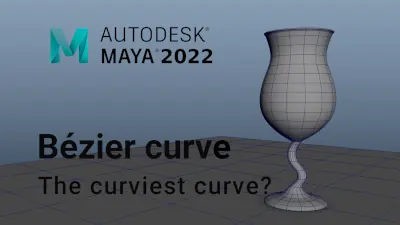Maya 2020 fundamentals - modelling the real world
Get halfway through a model and find it's an unworkable mess? Can't add edge loops where you need them? Can't subdivide a mesh properly? If any of this sounds familiar check this course out.
#
1
07-10-2005
, 07:42 PM
Registered User
Join Date: Sep 2005
Join Date: Sep 2005
Posts: 23
Passing particles through geometry holes
#
2
10-10-2005
, 11:28 AM
One more thing. Maybe the fluid IS coming through but you have your opacity ramp set wrong. Let the sim run for a while then play around with the opacity ramp. The fluid might be coming through but it is so thin that it just isn't visible. Adjusting the opacity ramp could make it visible again. You might want to turn up the density scale. I think it's default is .5 . Try turning it up to 1 or higher.
One more thing. You could turn the heat up on your fluid emitter(s) then turn the bouyancy for the temperature up also. Let us know how it turns out.
#
3
11-10-2005
, 02:06 PM
Subscriber
Join Date: Feb 2005
Join Date: Feb 2005
Location: Winter Park, FL
Posts: 62
temperature is only used if you have some sort heat(or cold) source, so it depends on what you're doing... Just what kind of effect are you doing? Smoke, fire..??
Your system will get bogged down, there's no way around it, even on a workstation it will bog down, thats the price of having good looking fluids and you have to be willing to make that sacrifice sometimes. There is such a thing though as going too high of a resolution, and for smoke you don't need high resolutions...
You don't need to touch your density scale, but you do need to fool around with your opacity ramp and raise the boyancy of your density, but leave the gravity at its default 9.8....also put a damp of .005 on it, its always good to sort of dampen things to "keep it real"
The opacity ramp... From left to right is 0 to 1 outside to inside and how many points you add depends on what you're doing. Transparency and Opacity go hand in hand for this particular effect.
you need some sort of dissipation on the density, for this I recommend about .15... you need a little bit of turbulence to throw and mix around, .03 would be good for this, any more than .1 and it will throw your fluids around too much....
Now depending on what you're doing, you will set the resolution accordingly, don't forget that you can use the normal scale tool also, you just have to raise or lower your resolution as needed, but you can also use extend fluids, that also depends on the situation.
Just what effect are you doing with fluids? Smoke? Fire? Dry Ice? .....
#
4
11-10-2005
, 03:29 PM
Another thought: You can add fields to the sim to do things like create newton fields, turbulence, vortex and a few other things. these are a little tricky to figure out but they work very well.
Here's a like to an explosion test I did that used a mild vortex field.
test explosion 500kb quicktime file
Last edited by Velusion; 11-10-2005 at 03:34 PM.
#
5
11-10-2005
, 03:40 PM
Subscriber
Join Date: Feb 2005
Join Date: Feb 2005
Location: Winter Park, FL
Posts: 62
#
6
13-10-2005
, 05:18 PM
Registered User
Join Date: Sep 2005
Join Date: Sep 2005
Posts: 23
#
7
13-10-2005
, 07:33 PM
Collision problems happen with my fluid sims if the tesselate isn't set high enough. When you create a collision between the fluid and an object, a geo connection is made and shows up in the attribute editor. If you click on it, you will see where you can adjust the tesselate. I always have penetration problems with very thick fluids. I'm not sure why. Maybe voxel resolution does have something to do with it. Thanks for the idea.
Post a clip when you get it all figured out!
Last edited by Velusion; 13-10-2005 at 07:39 PM.
#
8
13-10-2005
, 08:06 PM
Subscriber
Join Date: Feb 2005
Join Date: Feb 2005
Location: Winter Park, FL
Posts: 62
As for your penetration problem Vel, if you're using volume render its just a matter of setting your opacity graph with transparency, but if you're using surface render then modifying the surface tolerance(doesn't really do much of anything) and threshold would help reduce that, though its touchy and hard to work with, so its a damned if you do and damned if you don't situation. The fluid resolution may help some, but you again get expensive with higher resolutions and really the cost vs effect isn't worth it.
Posting Rules Forum Rules
Similar Threads
Dynamics: A few questions...
by xgabrielx in forum Dynamics & Special Effects replies 1 on 08-01-2015
how do i convert geometry to particles
by jacobtwumasi in forum Dynamics & Special Effects replies 2 on 31-07-2008
particles with geometry instances collision problem
by rassie in forum Dynamics & Special Effects replies 1 on 23-10-2006
Particles moving on a surface! Please Help!
by Eurofiles in forum Dynamics & Special Effects replies 4 on 31-07-2006
Particles moving on a surface! Please Help!
by Eurofiles in forum Work In Progress replies 1 on 28-07-2006
Topics
New tutorial - Create tileable textures from photos. Photoshop to Alchemist to Maya 2
By David
Site News & Announcements
5
Free Courses
Full Courses
VFX News
How computer animation was used 30 years ago to make a Roger Rabbit short
On 2022-07-18 14:30:13
Sneak peek at Houdini 19.5
On 2022-07-18 14:17:59
VFX Breakdown The Man Who Fell To Earth
On 2022-07-15 13:14:36
Resident Evil - Teaser Trailer
On 2022-05-13 13:52:25
New cloud modeling nodes for Bifrost
On 2022-05-02 20:24:13
MPC Showreel 2022
On 2022-04-13 16:02:13








